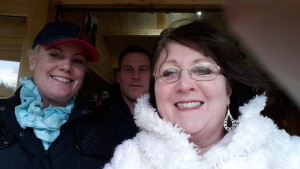
A fascinating visit to Anson Packaging on Tuesday, thanks to Trevor Wilkin and Chris Plant. After hearing about the history and growth of the company, I was given a comprehensive tour of the facilities and an opportunity to see from start to finish the production of the plastic food packaging that the company produces.
The compulsory ‘gear’ of oversized navy blue cover-all, hi-vis jacket, ear plugs, hairnet, and hard hat isn’t the most flattering I’ve ever worn, but is obviously essential for both safety and food hygiene.
I was given an introduction to the different types of plastic, including the polyethylene terephthalate or ‘PET’ plastic which is used for drinks bottles and other food and drink containers. A visit to the laboratory showed the various testing equipment that is used to analyse samples.
In the factory itself, shredded and cleaned plastic ‘cornflakes’ of previously used plastic are liquified and then extruded into a thin sheet sandwiched between two very thin layers of virgin plastic. The sheet is cut to width, and the remnants returned to the beginning of the process for chipping and re-entry into the system.
The completed sheets are wound into large rolls and put into the next stage of the process, where they are ‘thermoformed’ into shape – as the familiar triangular cases for ready-made sandwiches, containers for chilled supermarket mixed salads, pots for marinated olives, and so on. The plastic containers are then stacked, packed, and racked for distribution. Everything is labelled at every stage of the process to enable strict controls and recording.
A number of changes are in prospect at Anson, including more thermoforming machines, and new silos to ease movement of materials around the site. It’s clearly a lively and vibrant business, and a large local employer, making productive use of our discarded plastics to create items we rely on almost every day without even realising it.




